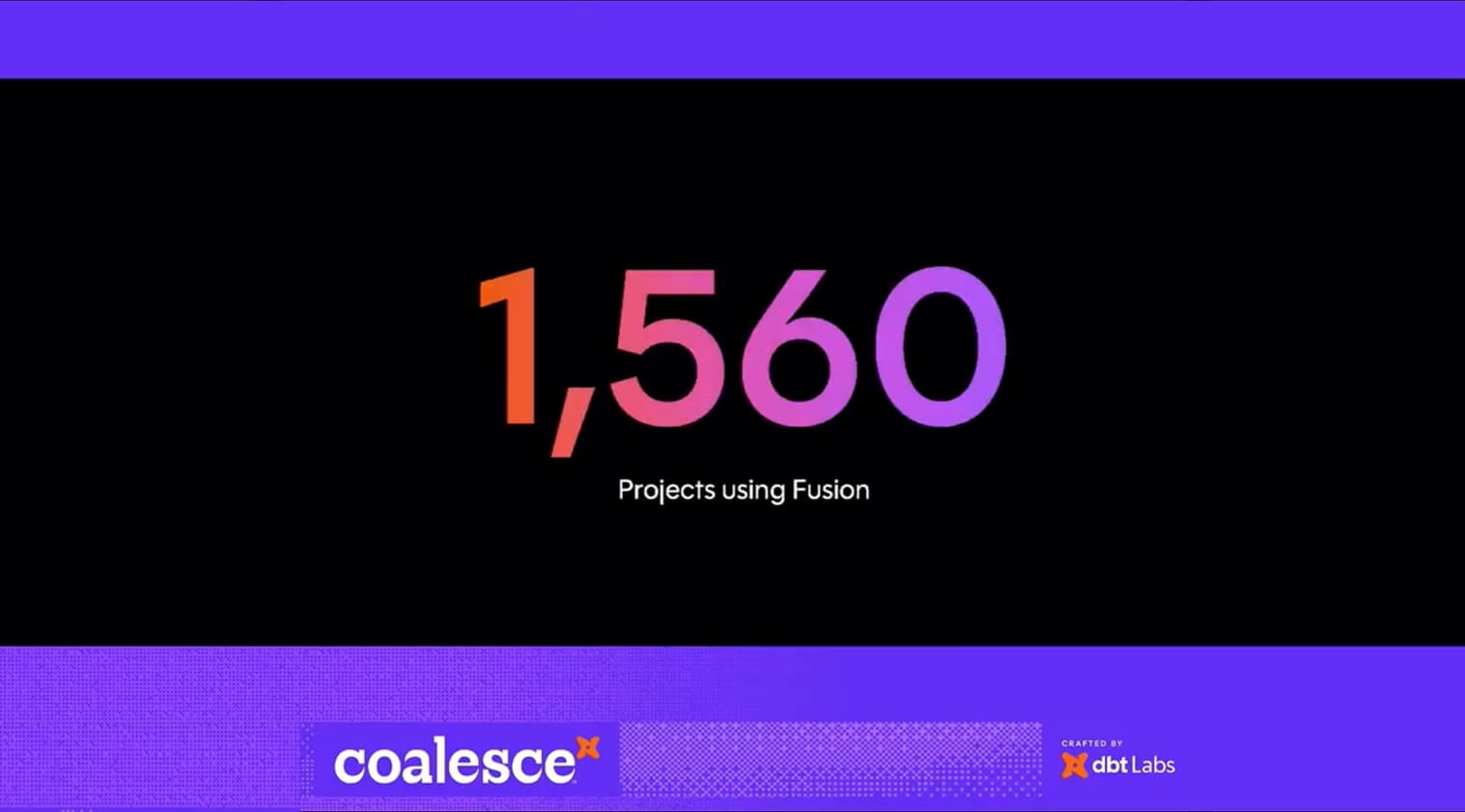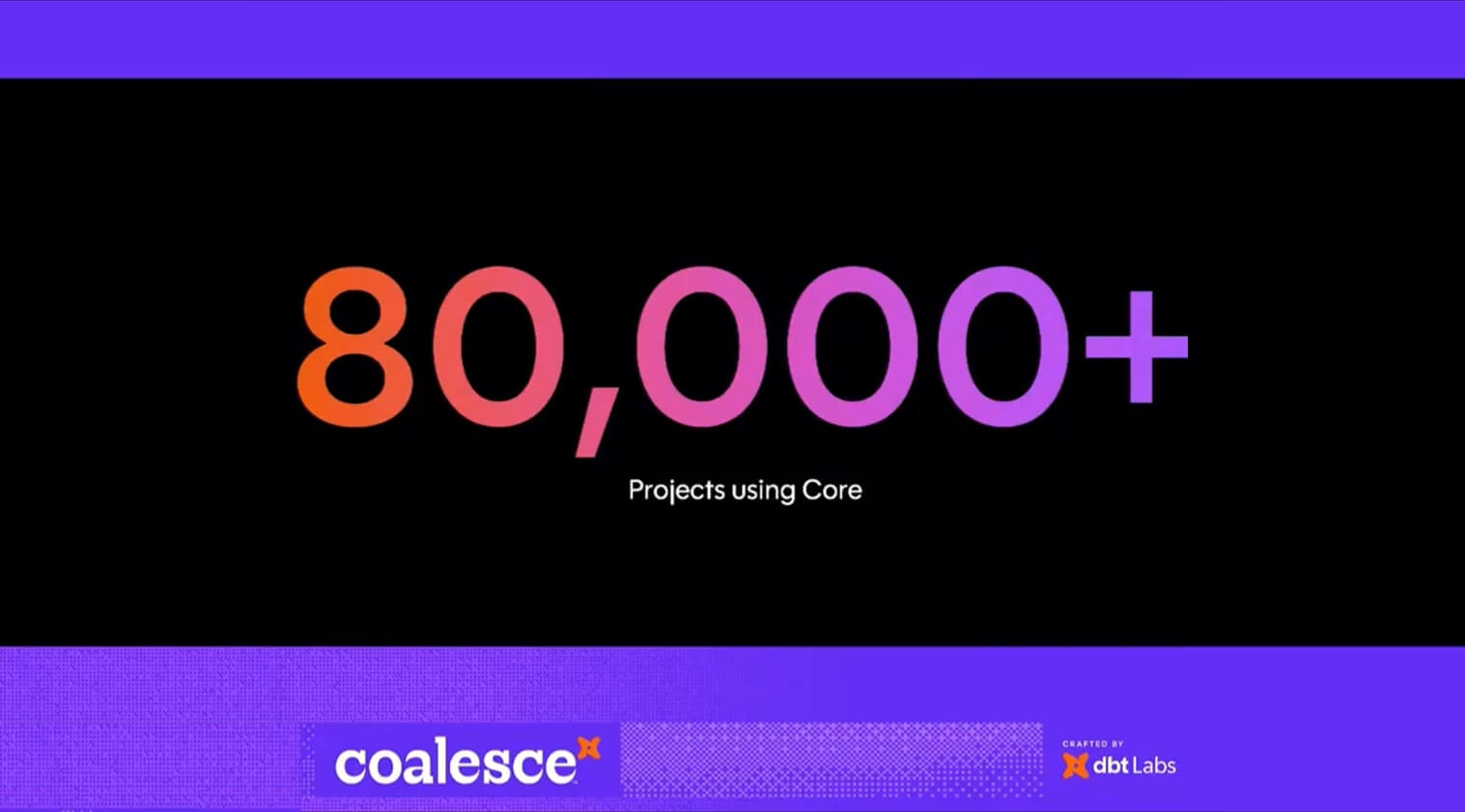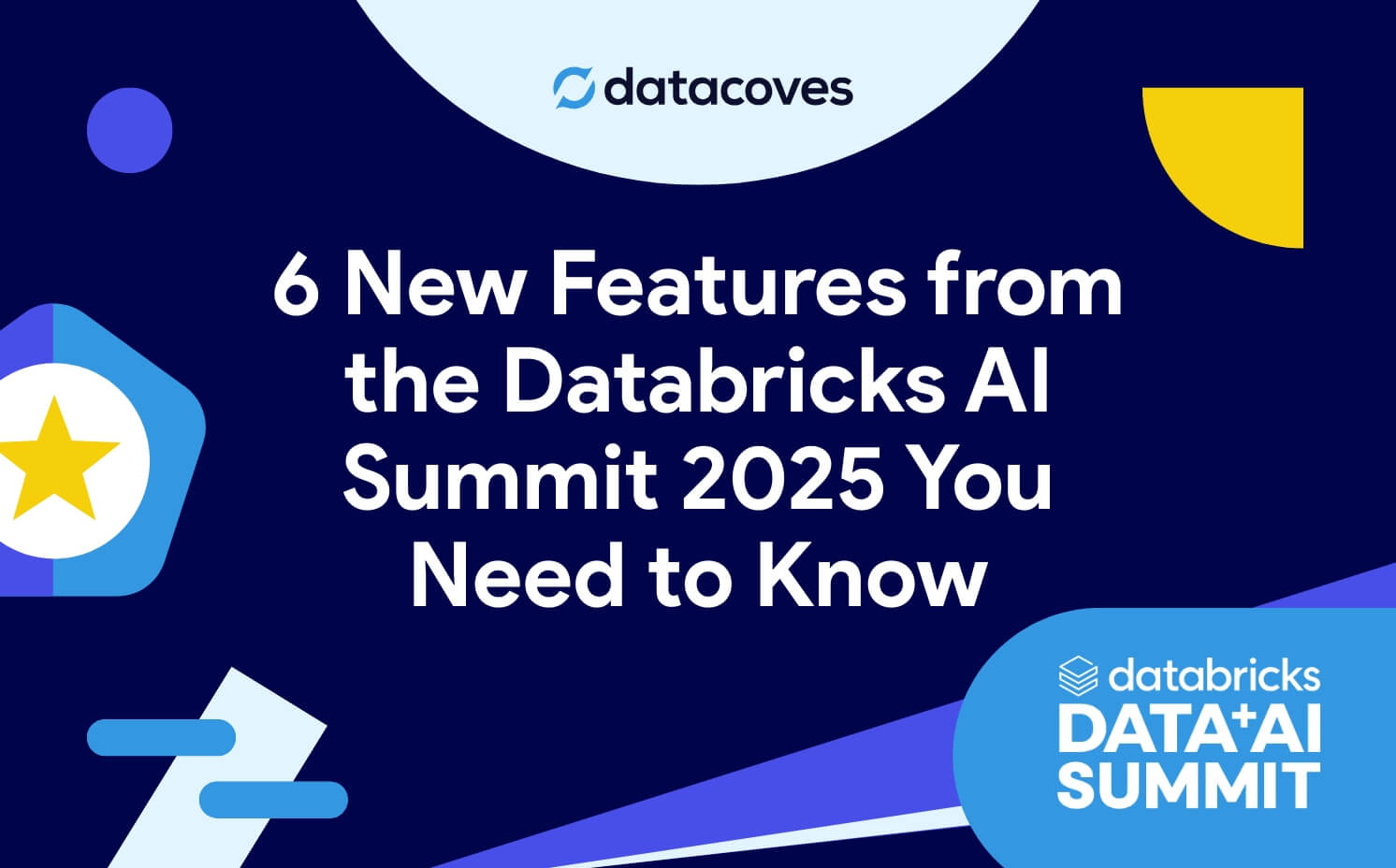The merger of dbt Labs and Fivetran (which we refer to as dbt Fivetran for simplicity) represents a new era in enterprise analytics. The combined company is expected to create a streamlined, end-to-end data workflow consolidating data ingestion, transformation, and activation with the stated goal of reducing operational overhead and accelerating delivery. Yet, at the dbt Coalesce conference in October 2025 and in ongoing conversations with data leaders, many are voicing concerns about price uncertainty, reduced flexibility, and the long-term future of dbt Core.
As enterprises evaluate the implications of this merger, understanding both the opportunities and risks is critical for making informed decisions about their organization's long-term analytics strategy.
In this article, you’ll learn:
1. What benefits could the dbt Fivetran merger offer enterprise data teams
2. Key risks and lessons from past open-source acquisitions
3. How enterprises can manage risks and challenges
4. Practical steps dbt Fivetran can take to address community anxiety

Streamlined Data Stack: The Promised Benefits of the dbt Fivetran Merger
For enterprise data teams, the dbt Fivetran merger may bring compelling opportunities:
1. Integrated Analytics Stack:
The combination of ingestion, transformation, and activation (reverse ETL) processes may enhance onboarding by streamlining contract management, security evaluations, and user training.
2. Resource Investment:
The merged company has the potential to speed up feature development across the data landscape. Open data standards like Iceberg could see increased adoption, fostering interoperability between platforms such as Snowflake and Databricks.
While these prospects are enticing, they are not guaranteed. The newly formed organization now faces the non-trivial task of merging various teams, including Fivetran, HVR (Oct 2021), Census (May 2025), SQLMesh/Tobiko (Sept 2025), and dbt Labs (Oct 2025). Successfully integrating their tools, development practices, and support functions will be crucial. To create a truly seamless, end-to-end platform, alignment of product roadmaps, engineering standards, and operational processes will be necessary. Enterprises should carefully assess the execution risks when considering the promised benefits of this merger, as these advantages hinge on Fivetran's ability to effectively integrate these technologies and teams.

The Future of dbt Core: Examining License Risk and the Rise of dbt Fusion
The future openness and flexibility of dbt Core is being questioned, with significant consequences for enterprise data teams that rely on open-source tooling for agility, security, and control.
dbt’s rapid adoption, now exceeding 80,000 projects, was fueled by its permissive Apache License and a vibrant, collaborative community. This openness allowed organizations to deploy, customize, and extend dbt to fit their needs, and enabled companies like Datacoves to build complementary tools, sponsor open-source projects, and simplify enterprise data workflows.
However, recent moves by dbt Labs, accelerated by the Fivetran merger, signal a natural evolution toward monetization and enterprise alignment:
1. Licensing agreement with Snowflake
2. Rewriting dbt Core as dbt Fusion under a more restrictive ELv2 license
3. Introducing a “freemium” model for the dbt VS Code Extension, limiting free use to 15 registered users per organization

While these steps are understandable from a business perspective, they introduce uncertainty and anxiety within the data community. The risk is that the balance between open innovation and commercial control could tip, raising understandable questions about long-term flexibility that enterprises have come to expect from dbt Core.
dbt Labs and Fivetran have both stated that dbt Core's license would not change, and I believe them. The vast majority of dbt users are using dbt Core and changing the licenses risks fragmentation and loss of goodwill in the community. The future vision for dbt is not dbt Core, but instead dbt Fusion.
While I see a future for dbt Core, I don't feel the same about SQLMesh. There is little chance that the dbt Fivetran organization would continue to invest in two open-source projects. It is also unlikely that SQLMesh innovations would make their way into dbt Core, as that would directly compete with dbt Fusion.
Vendor Lock-in Lessons: What History Teaches About Open-Source License Changes (Terraform, ElasticSearch)
Recent history offers important cautionary tales for enterprises. While not a direct parallel, it’s worth learning from:
1. Terraform: A license change led to fragmentation and the creation of OpenTofu, eroding trust in the original steward.
2. ElasticSearch: License restrictions resulted in the OpenSearch fork, dividing the community and increasing support risks.
3. Redis and MongoDB: Similar license shifts caused forks or migrations to alternative solutions, increasing risk and migration costs.
For enterprise data leaders, these precedents highlight the dangers of vendor fragmentation, increased migration costs, and uncertainty around long-term support. When foundational tools become less open, organizations may face difficult decisions about adapting, migrating, or seeking alternatives. If you're considering your options, check out our Platform Evaluation Worksheet.
On the other hand, there are successful models where open-source projects and commercial offerings coexist and thrive:
1. Airflow: Maintains a permissive license, with commercial providers offering managed services and enterprise features.
2. GitLab, Spark, and Kafka: Each has built a sustainable business around a robust open-source core, monetizing through value-added services and features.
These examples show that a healthy open-source core, supported by managed services and enterprise features, can benefit all stakeholders, provided the commitment to openness remains.
Enterprise Action Plan: 4 Strategies to Mitigate Consolidation Risks and Maintain Flexibility
To navigate the evolving landscape, enterprises should:
1. Monitor licensing and governance changes closely.
2. Engage in community and governance discussions to advocate for transparency.
3. Plan for contingencies, including potential migration or multi-vendor strategies.
4. Diversify by avoiding over-reliance on a single vendor or platform.
Governance & Vendor Strategy
Avoid Vendor Lock-In:
1. Continue to leverage multiple tools for data ingestion and orchestration (e.g., Airflow) instead of relying solely on a single vendor’s stack.
2. Why? This preserves your ability to adapt as technology and vendor priorities evolve. While tighter tool integration is a potential promise of consolidation, options exist to reduce the burden of a multi-tool architecture.
For instance, Datacoves is built to help enterprises maintain governance, reliability, and freedom of choice to deploy securely in their own network, specifically supporting multi-tool architectures and open standards to minimize vendor lock-in risk.
Demand Roadmap Transparency:
1. Engage with your vendors about their product direction and advocate for community-driven development.
2. Why? Transparency helps align vendor decisions with your business needs and reduces the risk of disruptive surprises.
Community Engagement
Participate in Open-Source Communities:
1. Contribute to and help maintain the open-source projects that underpin your data platform.
2. Why? Active participation ensures your requirements are heard and helps sustain the projects you depend on.
Attend and Sponsor Diverse Conferences:
1. Support and participate in community-driven events (such as Airflow Summit) to foster innovation and avoid concentration of influence.
2. Why? Exposure to a variety of perspectives leads to stronger solutions and a healthier ecosystem.
Supporting Open Source
Support OSS Creators Financially and Through Advocacy:
1. Sponsor projects or directly support maintainers of critical open-source tools.
2. Why? Sustainable funding and engagement are vital for the health and reliability of the open-source ecosystem.
Encourage Openness and Diversity
1. Champion Diversity in OSS Governance: Advocate for broad, meritocratic project leadership and a diverse contributor base.
2. Why? Diverse stewardship drives innovation, resilience, and reduces the risk of any one entity dominating the project’s direction.
Long-term analytics success isn’t just about technology selection. It’s about actively shaping the ecosystem through strategic diversification, transparent vendor engagement, and meaningful support of open standards and communities. Enterprises that invest in these areas will be best equipped to thrive, no matter how the vendor landscape evolves.
Preserving Trust: How dbt Fivetran Can Maintain Community Confidence and Avoid Fragmentation
While both dbt Labs and Fivetran have stated that the dbt Core license would remain permissive, to preserve trust and innovation in the data community, dbt Fivetran should commit to neutral governance and open standards for dbt Core, ensuring it remains a true foundation for collaboration, not fragmentation.
It is common knowledge that the dbt community has powered a remarkable flywheel of innovation, career growth, and ecosystem expansion. Disrupting this momentum risks technical fragmentation and loss of goodwill, outcomes that benefit no one in the analytics landscape.
To maintain community trust and momentum, dbt Fivetran should:
1. Establish Neutral Governance:
Place dbt Core under independent oversight, where its roadmap is shaped by a diverse set of contributors, not just a single commercial entity. Projects like Iceberg have shown that broad-based governance sustains engagement and innovation, compared to more vendor-driven models like Delta Lake.
2. Consider Neutral Stewardship Models:
One possible long-term approach that has been seen in projects like Iceberg and OpenTelemetry is to place an open-source core under neutral foundation governance (for example, the Linux Foundation or Apache Software Foundation).
While dbt Labs and Fivetran have both reaffirmed their commitment to keeping dbt Core open, exploring such models in the future could further strengthen community trust and ensure continued neutrality as the platform evolves.
3. Encourage Meritocratic Development: Empower a core team representing the broader community to guide dbt Core’s future. This approach minimizes the risk of forks and fragmentation and ensures that innovation is driven by real-world needs.
4. Apply Lessons from MetricFlow: When dbt Labs acquired MetricFlow and changed its license to BSL, it led to further fragmentation in the semantic layer space. Now, with MetricFlow relicensed as Apache and governed by the Open Semantic Interchange (OSI) initiative (including dbt Labs, Snowflake, and Tableau), the project is positioned as a vendor-neutral standard. This kind of model should be considered for dbt Core as well.
Making these changes will have a direct impact on:
1. Technical teams: By ensuring continued access to an open, extensible framework, and reducing the risk of disruptive migration.
2. Business leaders: By protecting investments in analytics workflows and minimizing vendor lock-in or unexpected costs.
Solidifying dbt Core as a true open standard benefits the entire ecosystem, including dbt Fivetran, which is building its future, dbt Fusion, on this foundation. Taking these steps would not only calm community anxiety but also position dbt Fivetran as a trusted leader for the next era of enterprise analytics.
Conclusion: The Road Ahead for Enterprise Analytics
The dbt Fivetran merger represents a defining moment for the modern data stack, promising streamlined workflows while simultaneously raising critical questions about vendor lock-in, open-source governance, and long-term flexibility. Successfully navigating this shift requires a proactive, diversified strategy, one that champions open standards and avoids over-reliance on any single vendor. Enterprises that invest in active community engagement and robust contingency planning will be best equipped to maintain control and unlock maximum value from their analytics platforms.
Maintain Flexibility with a Managed Platform
If your organization is looking for a way to mitigate these risks and secure your workflows with enterprise-grade governance and multi-tool architecture, Datacoves offers a managed platform designed for maximum flexibility and control. For a deeper look, find out what Datacoves has to offer.
Ready to take control of your data future? Contact us today to explore how Datacoves allows organizations to take control while still simplifying platform management and tool integration.



-Photoroom.jpg)




